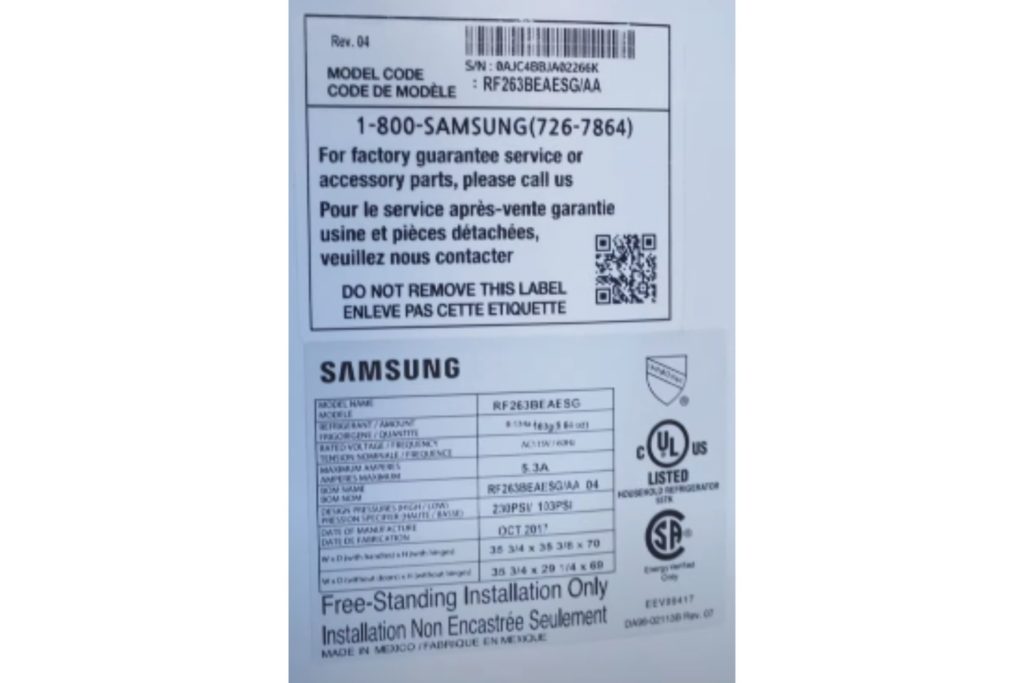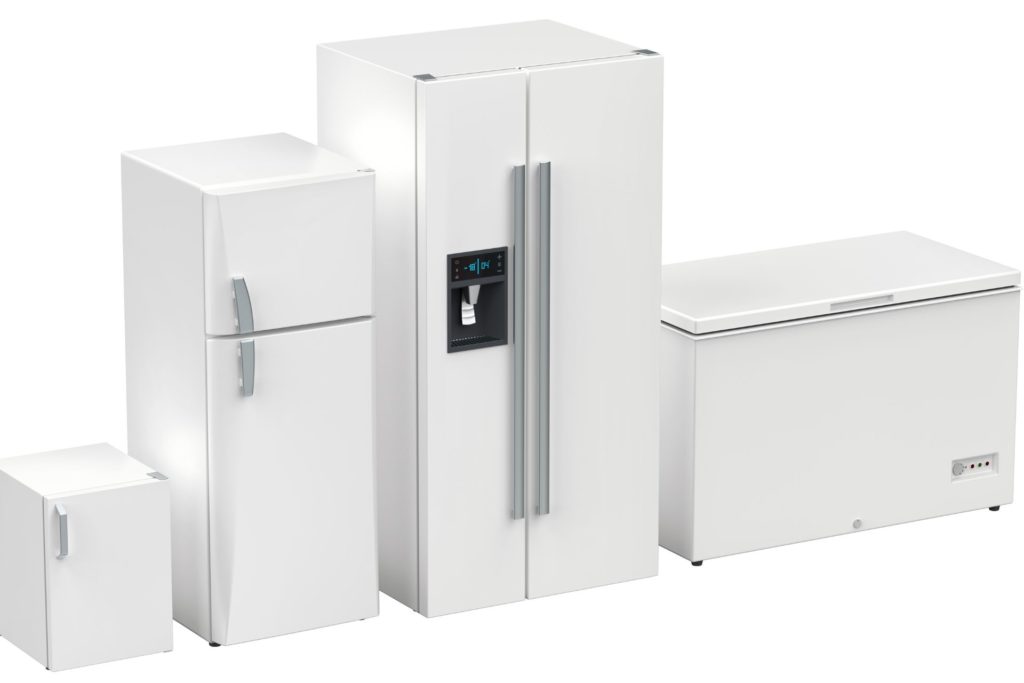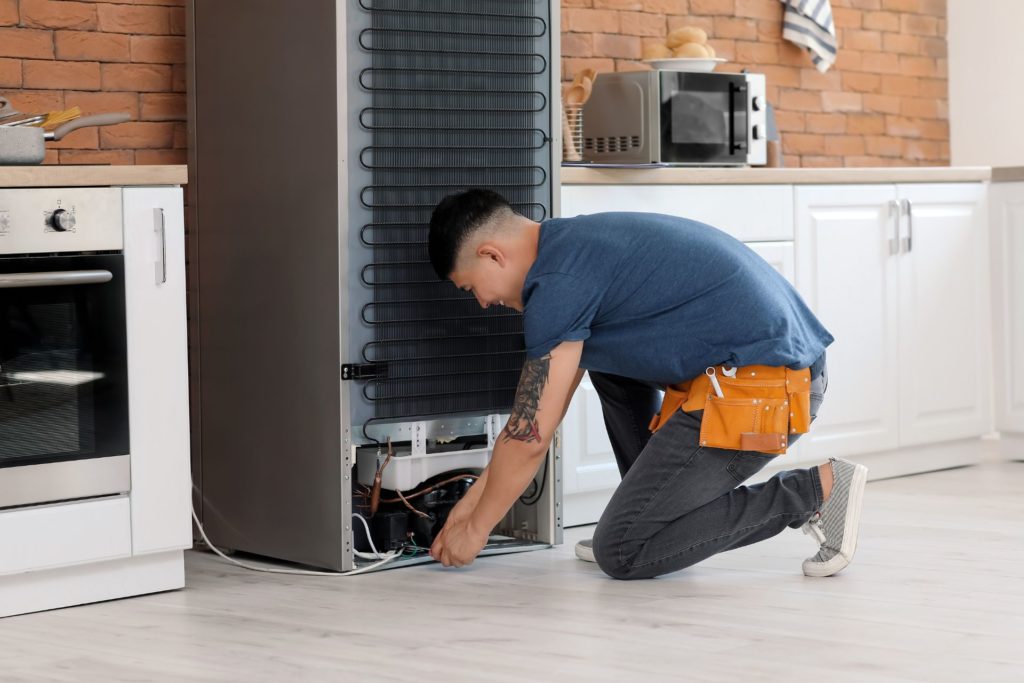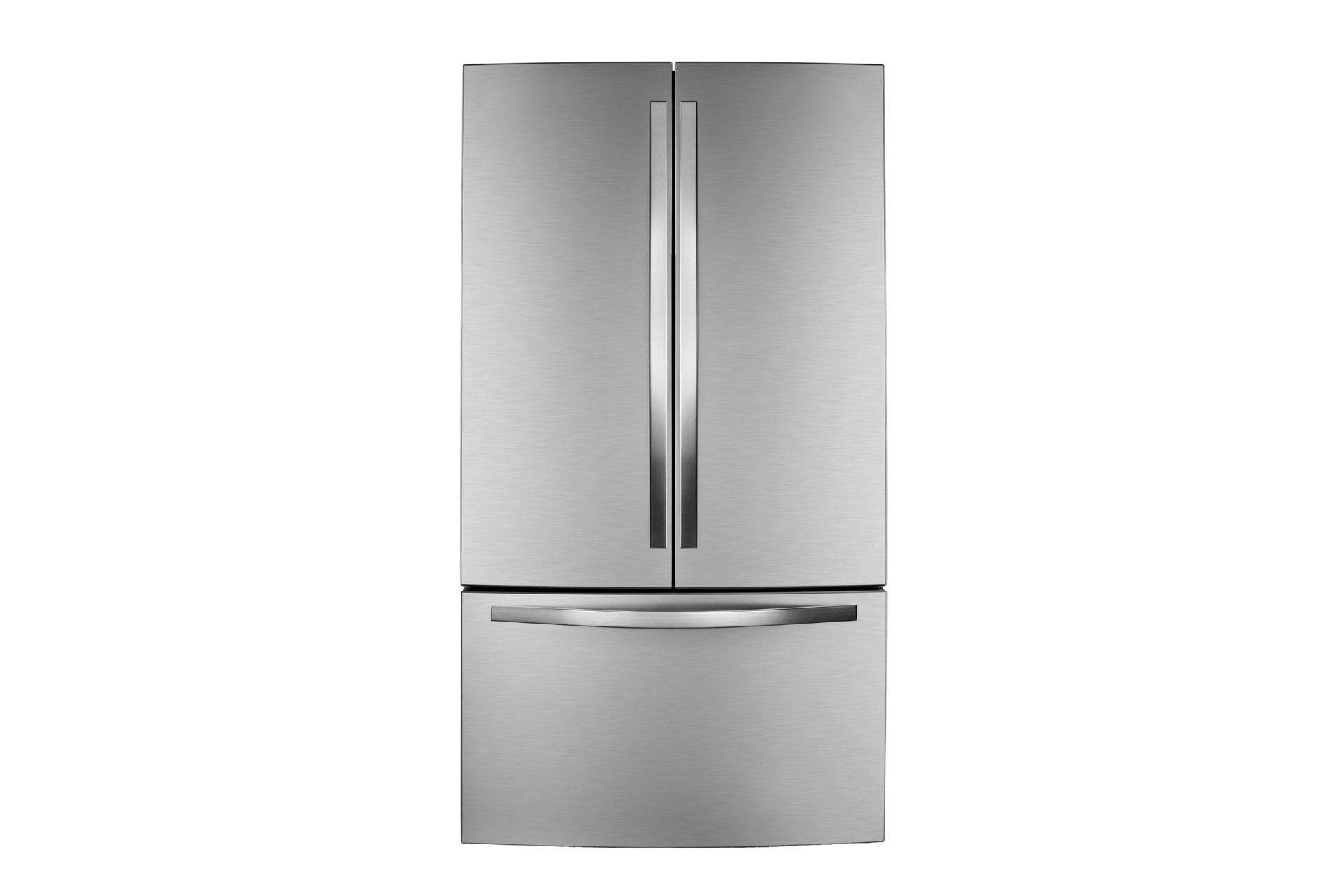Fridges have come a long way. In the past, people used ice blocks to keep their perishables cool. These days, everyone has a modern fridge with sophisticated features. But how much power does a fridge use? If you have a famous brand like Samsung, how much energy should you expect a Samsung fridge to consume?
How Much Energy Does A Samsung Fridge Use?
Samsung Fridge Consumption List
| Samsung Model | Energy Consumption Per Year |
| Samsung RB29FSRNDSA | 293kWh |
| Samsung RF261BIAESR | 398kWh |
| Samsung RF27T5201 | 705kWh |
| Samsung RF28T5101 | 645kWh |
| Samsung RF28R7201 | 755kWh |
| Samsung RF28R7551 | 755kWh |
| Samsung RS27T5200SR | 728kWh |
| Samsung RF23A9771 | 631kWh |
| Samsung BRF425200 | 629kWh |
| Samsung RF23J9011 | 680kWh |
| Samsung BESPOKE RF30BB6600 | 695kWh |
| Samsung RT18M6215 | 448kWh |
| Samsung RF260BEAE | 449kWh |
| Samsung RF18A5101 | 540kWh |
| Samsung RF20A5101 | 560kWh |
| Samsung 4-Door Flex RF29A9071 | 705kWh |
Samsung RB29FSRNDSA use 293kWh per year. But you cannot apply that information to every Samsung appliance. A large fridge needs more than 800 watts. So clearly, the size matters.
Some fridges have an energy-saving function that deactivates the exhaust and circulation fans once the compressor goes off.
The feature will also activate these fans if the need arises. It wouldn’t be an exaggeration to argue that Samsung fridges have become more efficient with the passing of time.
The people at Consumer Reports mentioned fridges from the 1970s that used as much as 1,750kWh per year. Modern Samsung appliances use just a fraction of that power.
The Samsung RF261BIAESR uses 398kWh, which is nothing compared to the energy its predecessors consumed. You can blame that efficiency on the insulation, high-end inverter compressor, and sensors that keep an eye on the ambient temperature.
Ultimately, the energy usage will depend on the fridge. Samsung has an extensive catalog of appliances. Some of them use a lot of power. Others use very little.
The average refrigerator costs $150 to operate annually, but you cannot trust that figure because different models use different quantities of electricity.
If you’re determined to identify the cost of running a Samsung fridge, you can try talking to Samsung’s customer support staff. But you can’t expect them to tell you the truth.
They will probably exaggerate your model’s efficiency because they don’t want to taint their reputation.
How To Calculate The Energy The Samsung Fridge Uses?
Finding a Samsung fridge’s energy usage isn’t quite as difficult as people think. First of all, you don’t have to perform any calculations if you don’t want to. Secondly, even the calculations you have to perform are simplistic. They are not quite as challenging as people assume:
1). Check The Labels

Have you looked at the labels? The labels you typically find on a fridge reveal the wattage. Therefore, before you call the Samsung helpline, take a moment to look for these labels on your appliances.
They will tell you everything you need to know. Once you know the wattage, you can calculate the energy consumption using the duration.
For instance, if your appliance uses 100W and you keep the fridge on for 8 hours a day, multiply 100W by 8 hours to get the daily usage.
You can use this same equation to find the weekly, monthly, and annual usage.
2). BEE Star

Look for the BEE star-rated sticker. The energy-saving sticker will show the annual energy consumption. Once you have this figure, dividing the yearly usage by 12 will give you the monthly usage.
You can keep dividing the figure to get the weekly, daily, and hourly usage. But you should take the information on the sticker with a grain of salt because experts attained that figure after exposing the appliance to specific test conditions.
Your power consumption could differ from those test conditions.
3). Power Meter
The methods above will estimate your power usage. But you can’t trust those estimations. A meter is more accurate because it measures energy usage directly.
Plug the appliance into the meter. Wait 24 hours and look at the display. It will show you the kWh you used. If you keep the meter in place, you can identify changes in your energy consumption.
You can use that information to create an energy-saving scheme.
4). Look At The Manual
Some manuals are incredibly detailed. They may reveal the daily, weekly, monthly, and annual energy usage. They could also show you the different conditions that compel fridges to use more energy.
5). Check The Website
Check the Samsung website. If you have the serial number, use it to find your model on the website. The platform will tell you all the details associated with your fridge, including energy usage.
You can also call the company, especially if you don’t have internet access.
5 Factors To Consider While Calculating Energy
Calculating a Samsung fridge’s energy usage is not easy because the power consumption will vary depending on factors like the following:
1). Size Matters

The size matters more than you think. For instance, mini-fridges use less electricity than their larger counterparts. In fact, if your large fridge is always empty, you are better off getting a mini-fridge. You will save more money than you expect.
2). Duration Matters
How many hours of use does the fridge get? As you may have guessed, the more usage the appliance receives, the more energy it consumes. For instance, a homeowner that keeps their fridge on 24 hours a day will spend more money than a person who uses their fridge for four or five hours each evening.
The duration will have a direct impact on your calculations.
3). Energy-Efficient Fridges Matters
I want you to purchase energy-efficient fridges because they are less costly to operate. Some fridges use less electricity because they are small.
Others are large but still use less electricity because they have energy-efficient features. That includes sensors that adjust the interior temperature in response to the exterior temperature.
In other words, the energy usage of the appliance will fluctuate, rising during some periods but then falling during others. Factoring those fluctuations into your calculations is difficult.
The equations most people use assume that the energy usage will remain consistent throughout the day. You are better off consulting an expert and asking them to show you how to include fluctuations of this nature into your calculations.
4). Ventilation Matters
This is another factor that is difficult to account for when calculating energy consumption. However, it is essential. The location affects the ventilation, and the ventilation influences the power consumption.
Poor ventilation can increase energy usage. But regardless of whether the usage increases or reduces, you will notice fluctuations which an expert must account for when calculating the power consumption.
5). Season Matters
A fridge will work harder during hot summers because the ambient temperature is so high. On the other hand, these appliances do less work during the winter because the ambient temperature is so low.
Tips To Save Energy
If you want to lower your utility bills, you can use the following tips to save energy:
1). Buy Energy-Efficient Appliances
Where possible, you should always buy energy-efficient appliances. I want you to look at the energy star rating. It reveals the efficiency of the machine.
You can also look at the quoted consumption. Compare it to the quoted consumption of rival products. Some people settle for energy-intensive products because they don’t realize that energy-efficient options exist.
Compare as many Samsung fridges as possible before you make a decision.
2). Don’t Put Your Fridge Next To the Stove
Keep fridges away from hot devices. For instance, you cannot position the appliance next to a stove or heater. You will compromise the refrigerator’s functions because it has to work much harder to keep your food cool.
3). Keep The Door Closed
This goes without saying. You have to keep the door closed. Some people open the fridge on hot days because they want to use the cool air to combat the warm weather, but that is a mistake.
If you keep letting the air out, the fridge will consume more power than usual because it has to work much harder to lower the temperature.
4). Get A New Model
Older fridges are inefficient. This is true for every brand. Samsung has a reputation for making energy-efficient appliances. But if you bought your Samsung fridge in the 1980s, you cannot trust it to operate efficiently. Get a new model.
5). Keep The Fridge In Ventilated Area
Keep the appliance in a well-ventilated area. Avoid places where the device is surrounded by objects on all sides. For instance, you shouldn’t position a Samsung fridge between two cabinets.
6). Clean Condenser Coils

When was the last time you cleaned the condenser coils? The fridge uses more power when the coils are dirty because the compressor must work harder to perform its role.
Related post:

